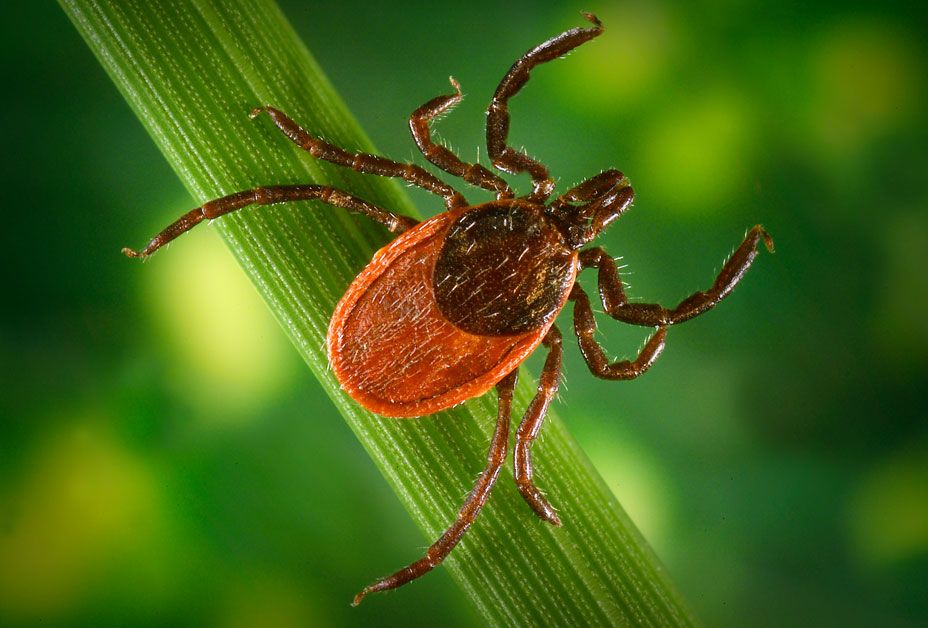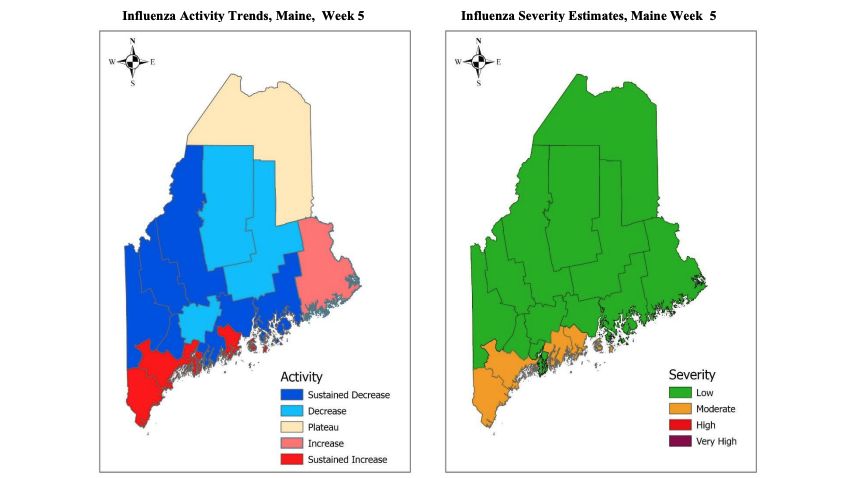Summer may be long gone but the scourge of ticks remains.
The Maine Center for Disease Control and Prevention on Wednesday warned that ticks are alive and kicking well into the fall and that adult deer ticks, which transmit Lyme disease, are active through at least November.
That species, according to the Maine CDC, is “commonly found in wooded, leafy, and shrubby areas, which may include areas around the yard.”
“The most common symptom of Lyme disease is a ‘bull’s-eye’ rash,” Maine CDC states. “Other symptoms of tickborne disease include body aches, chills, fever, headache, and swollen lymph nodes. If you experience any of these symptoms, talk to a health care provider and be sure to mention any recent tick exposure.”
In addition to Lyme disease, deer ticks spread other diseases including anaplasmosis, babesiosis, Borrelia miyamotoi and Powassan encephalitis.
Anaplasmosis will cause fever, headache, chills and muscle aches, according to the U.S. Centers for Disease Control.
Babesiosis is caused by microscopic parasites that destroy red blood cells but often does not lead to symptoms, according to the CDC. The disease can be serious for certain populations, including the elderly and those without a spleen.
Borrelia miyamotoi, or “hard tick relapsing fever,” is a bacterial infection that can lead to fever, chills and headache, according to the CDC.
Powassan virus is a potentially deadly form of encephalitis – inflammation of the brain – with no vaccine or medical treatment available, according to the CDC. Symptoms include fever, headache, vomiting and weakness.
As of Oct. 25, so far this year there have been recorded in Maine 2,416 cases of Lyme disease, 563 cases of anaplasmosis, 156 cases of babesiosis
nine cases of hard tick relapsing fever and four cases of Powassan encephalitis.
PREVENT RISK BY LIMITING EXPOSURE
To limit exposure to potential tick bites, the Maine CDC recommends:
Knowing tick habitat and taking precautions in areas where ticks may live;
Wearing light-colored clothing that covers the arms and legs and tucking pants into socks;
Using an EPA-approved repellent like DEET, picaridin, IR3535 or oil of lemon eucalyptus on skin, and using permethrin on clothing;
Checking for ticks daily and after any outdoor activity, and checking family members and pets;
Removing clothing when you get home and placing them in a dryer before washing, using high heat for 10-15 minutes to kill any crawling ticks.
A tick identification for free and tick testing is available for Mainers for $20 to keep track of ticks but not for diagnosing disease. More information is available at ticks.umaine.edu.
Learn more at maine.gov/lyme.









